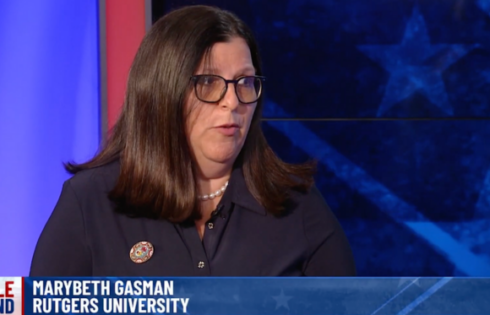Affirmative action policies have been a flashpoint for disagreement for years. Two students from Stanford recently penned an op-ed calling for an end to the practice.
“Using education to level society is an admirable goal,” write Andrew Lee and Jose Antonio Avalos at The Stanford Review. “But deciding a student’s admission by the color of his skin is lazy and simplistic.”
Affirmative action policies are meant to address historical inequities by giving historically underprivileged minority groups preferential treatment. But, as the authors write, “Though white people have historically enjoyed the most privilege in American society, to uniformly discriminate against them through affirmative action would be unfair.”
“Not all white people are wealthy – though the poverty rate of white Americans is lower than their black and Hispanic counterparts, they are still the largest impoverished group in America.”
“By only considering black or Hispanic students oppressed,” they continue, “college admissions officers fail to consider the plight of thousands of poor white students.”
From the op-ed:
Additionally, not all white people have the same history: in fact many have faced similar oppression to other minorities. Jews, European immigrants, and Mestizo Latinos are all considered to be technically white, but have historically been denied jobs and education and viewed as inferior. These groups are doubly disadvantaged by affirmative action.
When applied to Asian Americans, affirmative action becomes even more regressive. Asian immigrants to the US are incredibly diverse, hailing from the “traditional” East Asian nations of China, Japan, and and Korea, as well as the Southeast Asian nations of Vietnam, Laos, Cambodia, and Philippines. However, the US government arbitrarily lumps these distinct ethnicities under one ill-fitting label of Asian-American/Pacific Islander. Such homogenization is egregious given the stark contrasts in class and privilege that different Asian Americans face.
Certainly the children of wealthy and educated Asian-American families who recently emigrated from the highly developed nations of Japan, Korea, and Taiwan seem to deserve little help compared to poor African-American students from Chicago. But these upper-class Asians make up a minority of the Asian-American population. According to the U.S. Census Bureau, immigrants from south central and southeastern Asia now form a combined 60.3% of all Asian immigrants, most of whom come from impoverished backgrounds in less-developed nations, such as Laos, Pakistan, and Cambodia. A study in New York City recently reported that immigrants from Vietnam, Cambodia, and Laos were much more likely to face economic hardship than immigrants from China and India, and wealth inequality among Asian-Americans is even more pronounced than among their white counterparts.
“If the intent of affirmative action is bridging income inequality,” the authors posit, “why rely on the indirect relationship between race and income, instead of income alone?”
Like The College Fix on Facebook / Follow us on Twitter




Add to the Discussion